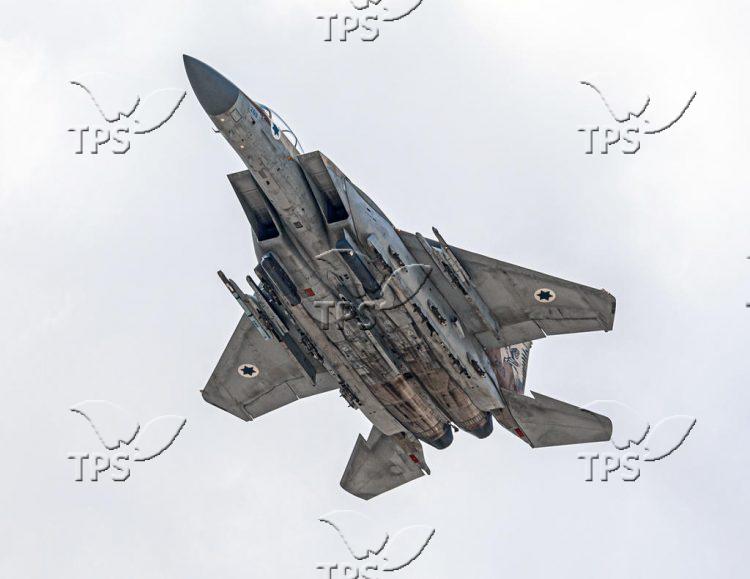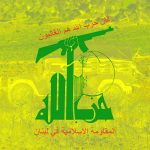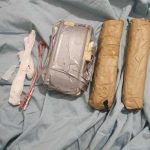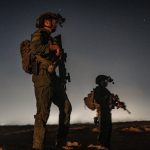Who Were the Senior Hezbollah Commanders Killed in Airstrike?
Jerusalem, 21 September, 2024 (TPS-IL) -- The Israel Defense Forces announced on Saturday the names of several senior Hezbollah commanders killed in Friday’s airstrike in Beirut. Sixteen terrorists were killed while meeting in the city’s Dahieh district, a Hezbollah stronghold.
Most prominent of the terrorists killed was Ibrahim Aqil, head of operations for Hezbollah’s elite Radwan Force. The 62-year-old Aqil was the most senior figure on Hezbollah’s Jihad Council, which supervises all of Hezbollah’s military activities. Aqil was personally overseeing the Radwan Unit’s plans to invade Israel’s Galilee region.
“Aqil and the commanders eliminated in the strike were responsible for planning, advancing, and executing hundreds of terrorist operations against Israel, including the planning of Hezbollah’s murderous scheme to raid the communities of the Galilee,” said IDF Spokesperson Rear Adm. Daniel Hagari.
“Ibrahim Aqil had the blood of many innocent people on his hands — Israelis, Americans, French, Lebanese and more,” Hagari said.
The US State Department had offered a $7 million reward for information leading to Aqil’s capture for his role in the bombings of the US Marines barracks in Beirut and the US Embassy in Beirut, both in 1983. The attack on the barracks killed 241 US servicemen, while the embassy bombing killed 63.
Aqil was widely regarded as the successor to Fuad Shukr, Hezbollah’s “Minister of Defense,” who was killed in an Israeli airstrike in Beirut on July 30.
The IDF said 15 other Hezbollah terrorists were eliminated in the strike, many of whom were senior commanders in the Radwan Force chain of command.
Abu Hassan Samir, who served as the head of the Radwan Force training unit, held various positions within the terrorist organization and was commander of the Radwan Force for a decade until early 2024. He was one of the planners and leaders of the “Conquer the Galilee” attack plan and was involved in advancing Hezbollah’s entrenchment in southern Lebanon, while attempting to improve the organization’s ground combat capabilities. Over the years, and during the first months of the war, he planned and executed numerous shooting attacks and infiltrations into Israeli territory.
Five of the Radwan Force commanders were planning the unit’s attack on the Galilee for years, waiting for the order to execute it. Israel identified them as Samer Abdul-Halim Halawi, commander of the coastal area; Abbas Sami Maslamani, commander of the Qana area; Abdullah Abbas Hajazi, commander of the Ramim ridge area; Muhammed Ahmad Reda, commander of the Al-Khiam area; and Hassan Hussein Madi, commander of the Mount Dov area.
Other high-ranking Radwan Force commanders killed on Friday included Hassan Yussef Abad Alssatar, who was responsible for Radwan Force operations. He led and advanced all of the force’s fire operations. Also killed was Hussein Ahmad Dahraj, Chief of Staff of the Radwan Force. He was involved in the transfer of weapons and the strengthening of the organization.
Tensions between Israel and Hezbollah have soared in recent days.
On Monday, the Security Cabinet updated its official war goals to include the secure return of 60,000 evacuated northern residents to their homes.
On Tuesday, pagers belonging to Hezbollah operatives exploded across Lebanon and in Syria, injuring thousands. More Hezbollah figures were injured in a second wave of explosions on Wednesday. The Iran-backed terror group said 32 of its people were killed, a number that has not been independently verified. Israeli officials believe the death toll is higher than Hezbollah has indicated. The blasts are widely attributed to Israel, but Jerusalem has not commented.
On Thursday, two Israeli soldiers were killed along the northern border in Hezbollah missile and drone attacks.
According to figures released by the Israel Security Agency (Shin Bet) Hezbollah fired 1,307 rockets at northern Israel in August, an average of 40 rockets daily. Since October 8, Hezbollah has launched more than 6,700 rockets and drones. The attacks have so far killed 26 civilians and 22 soldiers on the Israeli side.
Northern residents were forced to evacuate their homes when Hezbollah began launching rockets and drones in October. Hezbollah leaders have said they will continue the attacks to prevent Israelis from returning to their homes, which Hezbollah chief Hassan Nasrallah reiterated in a speech on Thursday night. The attacks have so far killed 26 civilians and 20 soldiers on the Israeli side.
Israeli officials have been calling for Hezbollah to be disarmed and removed from southern Lebanon in accordance with UN Security Council resolution 1701, which ended the 2006 Second Lebanon War.
Israel’s three other official war goals are the eradication of Hamas’s military and governing capabilities, the return of all hostages, and ensuring that Gaza no longer poses a threat to Israel.
At least 1,200 people were killed, and 252 Israelis and foreigners were taken hostage in Hamas’s attacks on Israeli communities near the Gaza border on October 7. Of the 97 remaining hostages, more than 30 have been declared dead. Hamas has also been holding captive two Israeli civilians since 2014 and 2015, and the bodies of two soldiers killed in 2014.







